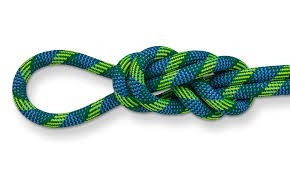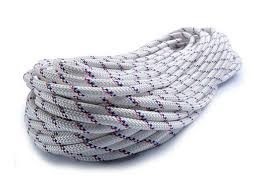6a) Types of Rope
Describe acceptable ropes for climbing and rappelling.
It’s easy to feel overwhelmed by the ins and outs of proper rope use, but fear knot!
When it comes to climbing and rappelling, using the right rope is key to both safety and performance.
Here’s a breakdown of the main types of ropes suitable for these activities:
Dynamic Ropes: Stretch under load, ideal for lead climbing.

Static Ropes: Minimal stretch, suitable for rappelling and rescue.

Accessory Cord: Lightweight, for anchors and prusik loops, not for climbing.

Rope Length
Another crucial consideration when selecting your rope is its length. For most indoor climbs, a rope length of 30-40 meters (100-140 feet) is typically ideal. For outdoor climbs, however, you’ll want a rope that is at least 60 meters (195 feet) long to safely tackle the single-pitch routes. In Colorado, there are many climbs that require a 70 meter rope (230 feet).
Always ensure that the rope you choose complies with industry safety standards, such as UIAA or EN, and is in good condition. Regularly inspect your ropes for signs of wear, cuts, or fraying, and retire any damaged ropes immediately to maintain a high level of safety during climbing and rappelling activities.